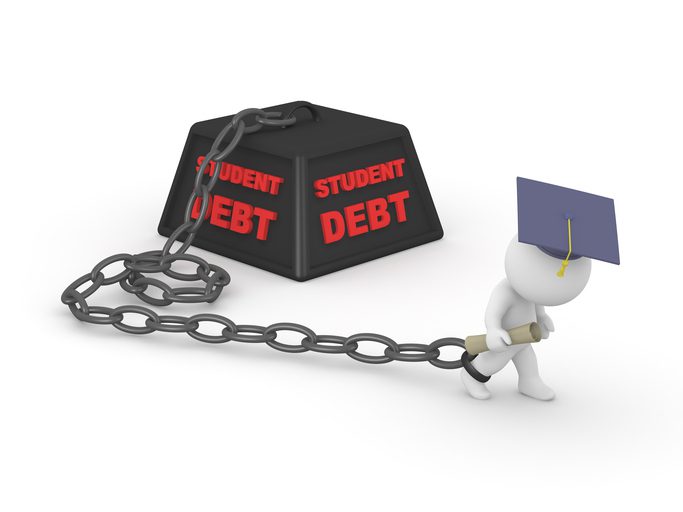
Last week the New York Federal Reserve President, William Dudley, gave a briefing on household debt with a particular focus on student loans. The briefing was based in part on a report just released by the NY Fed titled, Diplomas to Doorsteps: Education, Student Debt, and Homeownership.
The briefing highlighted the fact that household debt levels have almost returned to pre-crisis levels but the typical consumer’s balance sheet looks quite different. The big change is that consumers have moved away from housing related debt and accumulated much more student and auto loan debt.
At the same time, this increased student loan debt is having an impact on home ownership. Here is Fed President Dudley:
Those with significant student debt are much less likely to own a home at any given age than those who completed their education with little or no student debt… Of course, home ownership is more than just consumption — it has historically been an important form of wealth accumulation.
It is clear that burdensome student debt is now holding many people back financially. Student loan debt now stands at a staggering $1.3 trillion (as of the end of 2016) an increase of 170 percent over the preceding 10 years. There are three contributing factors to this increase:
- More students are taking out loans.
- The loans are for larger amounts.
- Borrower repayments have slowed down.
It is this last point that is the biggest cause for concern. Borrowers are now leaving school with over $30,000 in student loan debt and they are defaulting more. This is particularly true of those borrowers with balances of $100,000 or more. Over 20% of borrowers who left school in 2010 or 2011 owing that amount have already defaulted on this debt (a default means they are at least 270 days past due). That is an astonishingly bad default rate.
This Federal Reserve report is backed up by analysis released by the Consumer Federation of America last month. This analysis highlighted the total of $137 billion in student loan defaults at the end of 2016, more than 10% of the total loans outstanding. For most people this debt is not forgiven in a bankruptcy so it may lead to wage garnishment, damaged credit scores not to mention late fees and penalties. It is becoming a real problem and this is happening during a positive economic cycle.
Now, companies like SoFi, CommonBond, Earnest, Citizens Bank, Credible and many others are working to try and help students with this burdensome debt. SoFi invented student loan refinancing in 2011 and so this is still a very young industry. Consequently, the student loans books of all these companies are still tiny compared with the size of the problem.
What concerns me is not so much the HENRY (High Earners Not Rich Yet) segment popularized by SoFi. These are people who have sound finances as demonstrated by SoFi’s phenomenally low default rate of just a few basis points. The bigger problem is the millions of graduates who are struggling with debt, putting off buying a house, starting a family or a business and are often beginning their careers with more debt than their parents had ever accumulated in their lifetimes.
I don’t have the answer. But as the parent of a ten and eight year old I do wonder what life will be like for them when they get to college. I even wonder if college will be a financially sound option for young people in ten years’ time. I guess that is a topic for another time. This article is focused on the challenges with student debt and the impact this is having on society today.
Is student loan debt eventually going to eclipse residential real estate debt? I realize we are a long way away from that today but if you look at the trajectory of student loans that doesn’t seem impossible. Something has to give. I would love to hear the thoughts of Lend Academy readers so please sound off in the comments.


